Forestry is under attack. The public want us to let the forest be but continues to use products that comes from the forest. They have no clue but keeps demanding things. It is a classic problem – they simply want to eat the cake and keep it.
What do we do to protect the forest?
What the public don´t realize is that we, the forestry, already are under surveillance. The certification standards must be followed so that we can deliver certified forest products – which we do. But what are the standards to follow? What do we actually do to achieve that?
As you may have noticed, dear reader, I am engaged in different things apart from writing here at NordicWoodJournal.com. One of those “things” is to follow up felling operations to make sure that the work is done according to the certification standards. This does not make me an expert on certification, but I do know what is allowed and not in felling operations in Sweden.
What a “protected forest” is, is also being discussed and differs between countries. Again, I must refer to the Swedish model and what we put in the expression “protected forest”.
The FSC standard
The Swedish FSC (Forestry Stewardship Council) standard for forestry operations is a 93 pages document. It contains everything from legal issues, native people rights and working environment to social considerations, ancient monuments, economy/utilization, and environmental issues. I have read it, it´s an excellent sleeping pill. Luckily for me I can focus on the parts concerning the forestry operation itself.
Here I must point out that the standards according to FSC (and PEFC, Program for the Endorsement of Forest Certification) differs between different countries. As I work in Sweden, I only know the Swedish standards. Also, I work for one company who has set up their own standards that are just a little bit tougher than the FSC and PEFC standards. They, so to say, want to be on the safe side.
Environmental criteria being assessed
It is both clear cuts and thinning’s that are being checked. This year, I have so far only looked at clear cuts, very much due to the present bark-beetle situation.
Here are some examples of points we are looking at here in Sweden:
- Impediment – Forest area of minimum 0,1 hectare where the annual growth is lower than 1 cubic meter per year and hectare. Should be left for free development.
- Consideration biotope – Forest area with special environmental values. Should be left for free development or be managed to support biodiversity. When so required, a protective zone of forest should be left to protect the biotope.
- Consideration area – Small area that has or can develop environmental values that has been left during a felling operation. This could be a small wet area, a small very dry/rocky area, or a group of broadleaved trees in a coniferous forest (small = smaller than 0,1 hectare). Should be left for free development or be managed to support biodiversity.
- Edge zone – Area between forest land and other types of terrain, such as field, water (lake, river, etc.), impediment, road, urban areas, etc. Should be left for free development or be managed to support biodiversity. The edge zone should be 5 – 20 meters wide depending on the type of terrain.
Machine driving is prohibited in all the four above-mentioned areas. In some cases, eg. if there is a risk for wind-throw of spruce, the harvester can reach into the area with the crane, fell spruce trees and pull them out of the area, without driving into it.
- Trees and bushes – All tree- and bush species that were there when the felling operation started, should be represented on the site when the job is done. Especially species that are good for feed to wildlife, such as willow, rowan and aspen, should be left.
- Share of hardwood species – (Only for thinning) After thinning and pre-commercial thinning, the share of hardwood-/broadleaf species should be at least 10 % of the number of stems. Furthermore, at least 5 hardwood stems per hectare should be supported to become nature value trees (see below) in the future. If there are no hardwood trees on the site, conditions for such trees should if possible be created.
- Nature value trees – Deviating trees, such as large (over 7 centimeters diameter) rowan, willow and hazel, or old trees of any pine and hardwood species should be left. Also, old or dead trees with bird nests or nesting holes should be left.
- “Development trees” – At least 10 storm safe trees, such as pine and most hardwood species, should be left per hectare to become future nature value and old trees.
- Dead wood – All “old” dead wood (that has been dead for over one year) should be left on site. Standing dead trees could be cut as high stumps if there is a risk for injuring people, but the wood must stay on site. Fresh dead wood should be created by cutting three high stumps, 3 – 4 meters high, of fresh trees per hectare, preferably hardwood trees.
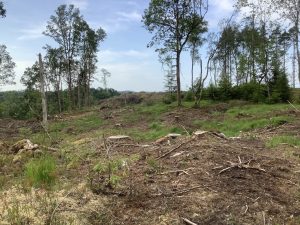
Some explanations to the above points
The last 100 – 150 years Swedish forest has been adapted to the growing forest industry. In practice this means that only Norwegian Spruce (Picea Abies) and Scots Pine (Pinus Silvestris) have been supported (with exception for the southern tip of Sweden where some beech and oak is grown). The adaption to the industry has also meant that thick trees has become less desirable, meaning they have been cut down to give room for new trees that fits the industry. Therefore, we have very little old forest, and few old and thick trees in Sweden compared to many other countries.
Furthermore, we have kept the forest clean from dead wood. This was meant to protect against insect attacks, but it also meant that the living space for many species in flora and fauna disappeared. Among those were many enemies to the bark-beetle who´s population then grew rapidly.
So, leaving nature value trees and “development trees” is a way to regain old and other rare trees. The problem is that it takes some hundred years to get “old” trees.
By leaving dead wood and making high stumps, we get dead wood at all stages, and recreate the living space for many threatened species. Hopefully also those who eat the bark-beetles’ eggs and worms.
Does the environmentalists and the public even understand that this is good?
It´s all about recreating the natural balance in the forest. It started with the convention of biodiversity in 1993. Since then, we have been working on it. The certification standards came later but are also a result of this.
Ancient and cultural monuments
Rests and signs of ancient life is also to be protected according to the certification standards. Here the Swedish authorities draws a line between ancient and cultural monuments by 1850. Older remains are ancient and very valuable, younger are cultural and less valuable.
The monuments could be stone walls, old foundations of buildings, houses, barns and stables. But it can also be piles of stone that have been picked from the fields. In this case it´s very difficult to decide how old the piles are. The first stones could have been placed there hundreds of years ago and the last ones less than 50 years ago. The fields have normally been used for generations and are now forest land.
Another type of monument is remains from charcoal production. Those are common in areas where mining has been important.
Ancient and cultural monuments should be marked by leaving 1,3-meter-high stumps next to the item in question. This makes it possible for coming operations, like scarifying, to see and avoid them. Most of the stumps are probably still there by the first thinning as well. It´s not allowed to drive over foundations and stone walls with forest machines. If a stone wall must be passed, a simple bridge of logs could be made to protect it. However, in most cases there are old “holes” in the walls that can be used.
Small stone piles could be passed by forest machines if no stones are moved from their position.
Tracks
A forwarder with full load leaves tracks. That will always happen so focus when it comes to tracks is to limit them and make sure they don´t affect any environmental values.
Tracks should of course be avoided as far as possible. This could be done by strengthening the main strip roads with slash.
“Development trees” are more than the required 10 per hectare.
In the areas described in the first four points above, no driving with forest machines is allowed. When crossing moving water, like ditches, creeks or wet areas, it has to be done without affecting or redirecting the water. This could be done by building bridges with logs and slash. Such a bridge over e.g., a ditch, should be left for coming operations on the site such as scarifying.
In some cases, it could be ok to fill a ditch with logs to create a crossing, but in this case the logs must be removed before the forwarder leaves the site.
In addition to the environmental aspects of leaving tracks in the forest, social consideration has to be taken in some cases. Close to urban areas, sport areas or other areas where the public may be present, special consideration must be taken for the general impression. Simply said – it must look good.
Does it make sense?
Back in my days behind the levers in the machines we didn´t think of this at all. If we got the timber out to the roadside it was ok. What it looked like afterwards didn´t matter. Very few people cared. It was simple for us.
Maybe we (me and the other operators from back then) are to blame for the new regulations? Here in Sweden, we have the advantage to be sparsely populated, meaning that people don´t see what we do out there in the forest. But sooner or later they will, if not sooner when the media finds out. And we all know how media can make things look bad, don´t we?
I also educate machine operators and forest workers in these issues. The “students” always wonders why we do this. Well, the public have power (even though they don´t act very logical) and we in forestry must show that we consider those issues. That we actually are doing something for the environment contrary to what media says. If we can show that we are at least one step ahead of the environmentalists and the certifiers, we can keep working in the forest for a long time to come.
The problem is to get this information out to the public (I see no point in delivering the information to the environmentalists as their view is very narrow). To be quite honest – forestry people are not the best marketing people … That is something for the top bosses to have a look at.
Yes, I think it makes sense. But for sure there are details to work on.
Photos: Per Jonsson






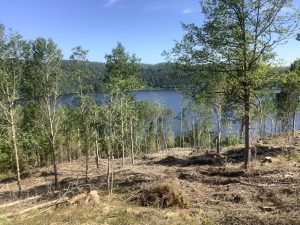
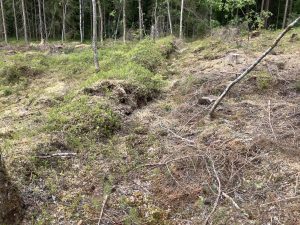
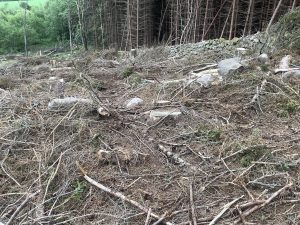
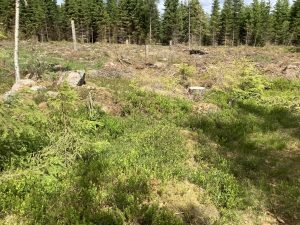
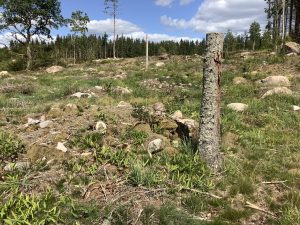
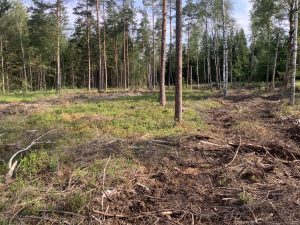
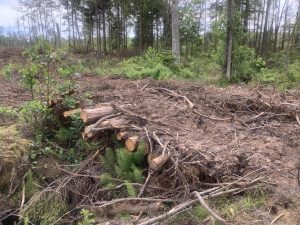






Good article Per, one of the main issues is the centralisation and streamlining of the forestry industry. Big machines need big volumes to work, saw mills need to be large scale, and are very restrictive on the type of logs they can process.
Small scale forestry supplying small saw mills can address many of the issues, and can quickly change to deal with environmental issues .
Thank you Muz. It’s very true that it would be easier to deal with those issues if there were only small machines in the forest. The problem, as you say, is the volumes the industry needs, and the time rates they need it in. Of course that could be solved with more small machines but then (they say) it will be too expensive.
I´m curious: Are these issues discussed where you are active? (I guess?) How do you cope with it? Do you have people like me checking forestry operations? If so: What are the criteria?
When you are applying for a felling licence (volumes >5m3) you have to complete an Europian Protected Species checklist, and conform that you will conform with the UK forestry good practice
https://naturalresources.wales/about-us/what-we-do/forestry/uk-forestry-standard/?lang=en
We do have forest officers that check that we are doing what we are suppost to be doing, but i have never seen any one. But I work for private land owners in small woods, so I am probably under the radar.
Interesting. When I work with chainsaw and clearing saw in the winter, I also work directly for small forest owners. I’ve never been checked so I guess I go under the radar too. It would be interesting to be checked though 🙂
The ones I work for following up felling operations are one of the major forest companies in south Sweden, Sydved, who are certified and only use certified contractors (such as me).